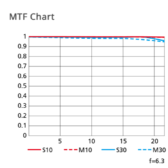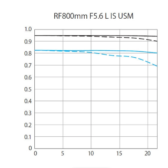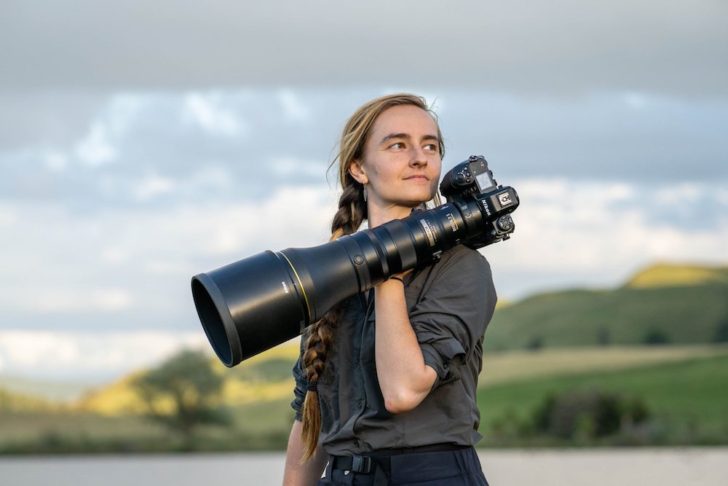Nikon this morning released its Z 800mm f/6.3 PF VR S, a big milestone for the Z mount, which until some weeks ago lacked most serious supertelephoto glass. Rumored only recently to be launching, the lens turns out to be light (5.25 pounds) and cheap ($6,500). It employs Nikon's PF fresnel technology to significantly shorten the lens.

While review copies seeded around the YouTuber community were tethered to agreements preventing people from commenting on image quality with the pre-production models, the MTF chart found on Nikon's site is pretty breathtaking, as seen at left.
Because the Nikon lens is a PF fresnel design, the MTF chart may reflect theoretical production perfection that isn't quite reached in actual manufacturing. It will be some time before samples in the wild confirm what the graph suggests.

This contrasts with the MTF chart Canon released of its upcoming RF 800mm f/5.6, which uses the RF 400mm f/2.8 design as a base and some internal elements to increase magnification. While this produces a better minimum focusing distance, the image quality – while still appearing excellent – is one or two generations behind.
It should be noted that the Canon MTF chart shown above is corrected for diffraction effects, where the Nikon MTF charts are not. If the diffraction effects on the MTF chart are similar to those seen with previous Canon lenses, this could explain about half of the difference in apparent MTF performance.
There appears to be just three downsides to the Nikon lens:
- The aperture is 1/3rd stop smaller than most 800mm supertelephotos.
- While better than most previous 800mm offerings, its minimum focus distance is still pretty far out, at more than 5 yards, giving the lens a 0.16x magnification ratio. This means that shooters have to back away from close subjects to get them in focus.
- You have to affix it to a Nikon body.
The good news about the new Nikon release is that the price difference between it and the new Canon equivalent is so wide, that you could buy two flagship Nikon Z9 cameras with the difference. The new Canon is 32 percent heavier; about two inches longer; and the image quality appears to be significantly impaired relative to the new Nikon.
Nikon also managed to make the lens image stabilization talk to the Z9's in-body image stabilization to provide a combined 5.5 stops of stabilization, versus the new Canon's 4.5 stops. Canon, having based their new lens on the EF mount 400mm Mark III design, was unable to similarly integrate the IS systems.
As neither lens has yet shipped, the specs may look more favorable to one side on paper yet turn out to signify less in actual field use. We've seen under-specced Canon products outperform the competition in the field before, but one spec that is unlikely to prove unexpectedly better in the field will be the $6,500 price of the Nikon versus the $17,000 price of the Canon.
Pre-orders are being accepted already, and shipping is expected to happen, well, sometime not soon.


Almost is an understatement.
I'm most interested in the fact that you now have a lens gap in Nikon's favor, and a megapixel flagship gap also in Nikon's favor. What a pain in the ass it would be to add a Nikon body just to shoot a whippy 800mm, but when you add in the high resolution, you start to entertain weird thoughts. I could sell one of my R5's and an EF big white Mark II and get a Z9 and 800mm by adding in $3k. No, it's not worth it to me, but the fact I was going through the math is telling.
One thing to note: if the effects of diffraction are similar to past MTF charts, it still would make up only about half of the deficit in apparent image quality.
Especially in Europe, we suffer from abusive pricing by Canon (RF 800 and 1200), which cannot be justified by taxes or other duties.
A US-Europe price difference is OK, but not to the current extent.
If I were new to photography, I'm not certain I'd opt for Canon...
PS: Sony wouldn't be the alternative.
The lens of theirs recently that caught my attention was a 400 f/2.8 with built in TC
I love my 500 f/4 II. But having built in flexibility to quickly pivot focal lengths even a little would be a welcome addition.
I am still hopeful for a 200-500 f/4 with built in 1.4xTC. Otherwise, I am content to stick with my kit. Even with Nikon doing some very good things.
Yes, this is embarrassing.
Do better, Canon.